|
DISCOVER THE NUI CHUA NATIONAL PARK
Phung My Trung - Nguyen Thi Lien Thuong - ADMIN
On Jan 10th 2011, my research group of Vietnam wild creatures and I came to Nui Chua National Park, Ninh Thuan, about 300km to the north of Ho Chi Minh City to study and take photos of plants and animals here for our website.
This area is a unique region of Vietnam: a semi - arid like Africa while the other half has tropical forests which often lush with hundreds of species living there.From the National Park headquarters, it took 30 minutes with the bus to reach the study area. The road was zigzagging along the mountainside by the sea with many steeps. The first yellow rays of the day showed on the erect bare rocky cliffs in the buffer zone of the National Park.
A Crested kingfishers Ceryle lugubris was standing on a protruding ledge; his eyes looked toward the sea where there was a difficult living for this species. Not everyone had the opportunity to enjoy the morning cool breeze from such a high and full of mighty like this bird.
In this season, the flowers of Buchanania reticulata, an excellent drought - tolerant plant and popular here, were blooming with sweet - scented white flowers attracting the honey bees to come to pollinate. Just a few hours later when the sun rose, the flowers would close to avoid losing water. So the sweet flowers of this species were just saved for the diligent and early working like the bees.
There was a huge stone standing on a smaller rock like a haughty challenge against time, sandy winds and storms. Surrounding this "wonder" were dry forests with many thorny plants.
Most of plants in the semi - arid and desert like could be the underbrush with big root and spreading wide enough to stand with strong and dry winds. They all have thick leaves, or rough and thorny shape, which is very typical of arid sea floras
Nestled in the green leaves was a Oriental whip snake Ahaetulla prasina sleeping after a tired night hunting for food. The favorite preys of this long body guy were lizards, young birds and birds' eggs ...Roused by the continuous sounds of camera shutter, he startled and stared at us with the eyes of precaution. Its long tongue kept moving like a threat to us. This species is just as big as a pencil but the length is 1 meter and the body well adapts to climbing and hunting on the trees.
After passing two low mountains to the elevation of 180m, we began to feel burnt by the harsh sunlight. Half of drinking water of the day was already used.
Near a small stream, an old chestnut tree with a rugged root gave us a good seat to avoid the sun. Looking up the tree, I came across a bunch of endemic white lips orchird Christensonia vietnamica, an orchid species discovered by the Dutch scientists Hagger. This is the only orchid species that can survive in such an extreme conditions like this.
|
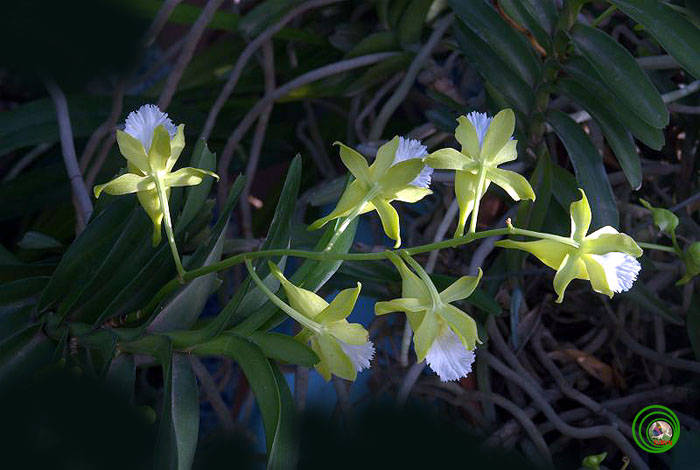
|
|
Continueing crossing next several low mountains, a small valley abundant in trees appeared in front of us. A rather wide stream with many large boulders layed in piles. A small dam of indigenous Raglay people filled the stream water into the green rice field. This place once was a small village of the Raglay people living and farming, but then with the policy of the gorvernment, they moved to live in new houses adjacent to the coast. Currently, the National Park Management Board still allow them to farm here.
We stoped for lunch and then everyone found shades to take a nap. We woke up when the noisy woodpeckers called their flocks and feeded on a fig tree. It was 1.45p.m so we prepared to move to 480m elevation where our group chose as a gathering point for the night.
Here the species in the forest all have a way to adapt to the intense heat. The currant tree Andestima sp. with small scrubby twigs surrounded by curly leaves. When the rainy season comes, the tree will produce new young leaves and grow again. Not only currant trees, along the path were also the bare trunks of milky trees... Together with many other plants, they were nearly hibernate. But just when some rains come, they will all awake intensely.
|
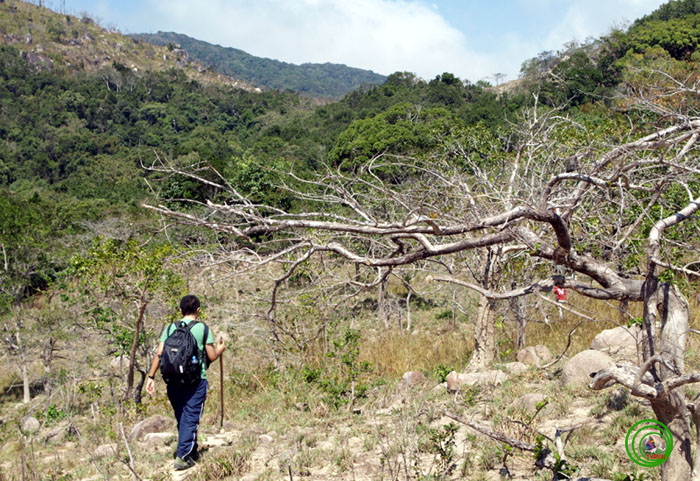
|
|
We camp beside a stream with flat rocks and shady trees. The trees here grew well because of the available water. In the forest, night felt quickly. Flocks of mosquitoes started attacking us crazily. We had dinner while trying to drive away the mosquitoes. Those huge mosquito proboscis could penetrate through the thick layers of clothes and make everyone jump.
We started the night work by going along the stream. It was time for the residents of the jungle to be animated to hunt for food after a day hiding from the harsh sunlight. A couple of Leopard cat Felis bengalensis were watching for their preys near the stream. When the strong torch lights hovered over, their flashing eyes looked toward us before leaving quietly.
The White-lipped Pit-viper Trimesurus albicolais rolled on a branch next to the water surface and quietly ambushed. In a cracks of a large rock, the Caovansung’s bow-fingered gecko Cyrtodactylus caovansungii (a new species discovered in 2005 in Nui Chua National Park) was enjoying its dinner with a Greasy Green Grasshoper...
|
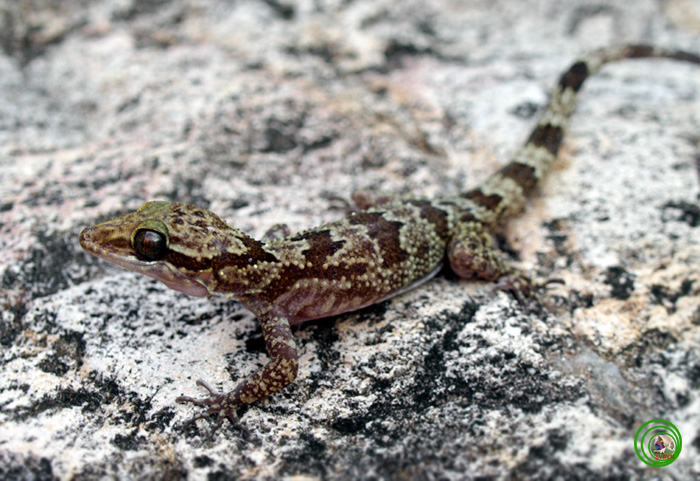
|
|
Failing to take a photo of a very moment in my life when the unclassify Gecko Gecko sp. was watching for a Blue - winged mantis. It is most likely that this species will be a new object for the my scientific research in the future. I almost stoodstill, could not believe in my eyes when seeing this mantis can live in such a dry place like this. Perhaps this was the biggest surprise on the first night at the Nui Chua National Park.
After collecting some samples of frogs, toads, lizards and photographed the specimens to add to the data of Vietnam creatures website (www.vncreatures.net), we were back to camp at 3 am. Just a few hours later, we were waken up by the noisy calls of a flock of White-crested laughingthrush Garrulax leucolophus. After breakfast, we continued moving up the top of the Chua mountain more than 1000m height. At the height of 800m, the large timber forests had been destroyed for cultivation, just remained barren rocks, low bushes and an immensity of cogon grass.
|
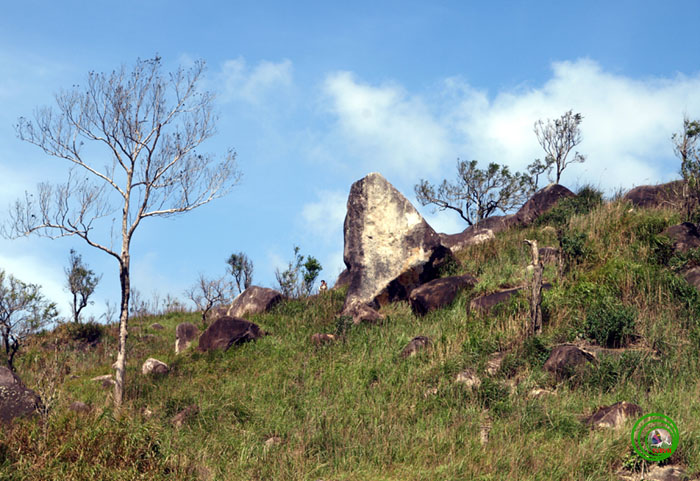
|
|
Strong winds seemed to push our steps back. Overcoming the " African like dry forests ", we came to the half "Asia" with evergreen forests and tropical moisture. The humidity here is very high because the winds from the sea meet cold and condense into steam clouds. Moreover, the forest cover is very good, so wet from litter leaf layers does not evaporate. The composition of the forest were large beech family Fagaceae and Coniferous trees such as Nageia fleuryi, Dacrydium pierei, Podocarpus annamiensisand Taxus wallichiana
|
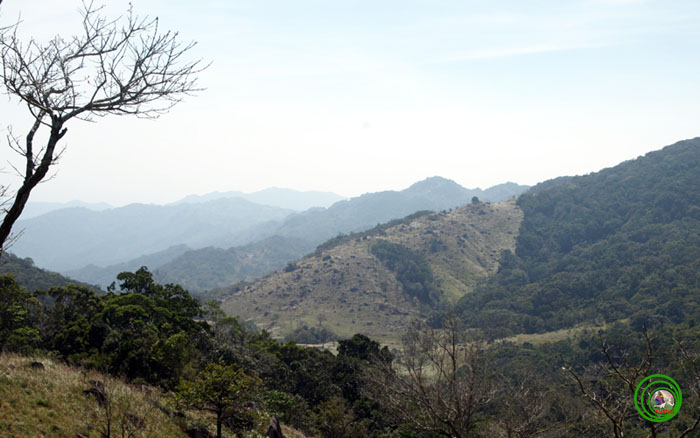
|
|
On the second night, we continued to search at each tree foot, blade of grass to find specimens. It was over midnight, my jacket was not warm enough to prevent the cold of dews and winds from soaking deep into body. The shoes were also wet after many hours wading under the cold water.
While walking, Cao Van Tham, the ethnic Raglay way leader with his barefeet for all life, suddenly shouted when he stepped on something black, slimy and movable. I ran toward him with the iron grip and pulled this creature out the narrow slit. It's a pretty big Asian tailed caecilians not snake. Eventhough i already explained this was just one amphibian species Ichthyophis bannanicus which layed their eggs in the cave and harmless to humans, the Raglay guy still looked at it with the eyes filled with suspicion. Until I pulled out the clutch from the cave and touch the pretty cute mouth of the amphibian, Cao Van Tham relieved a bit but still keep the distance.
|
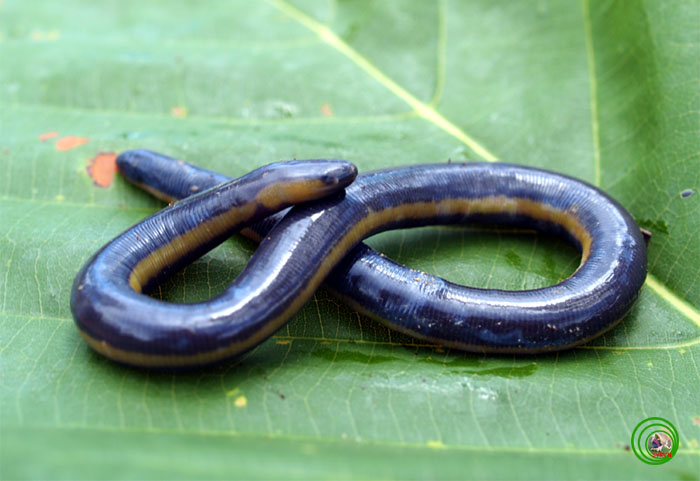
|
|
We had a bumper night of specimen collecting. The most noticaeble was the two very nice tree frog Rhacophorus sp. found when laying eggs on a rock and a Zingiberaceae family plant along streams. The fact that the tree frogs are laying eggs in this season in Nui Chua National Park is certainly an exciting discovery for the researchers in reptiles and amphibians.
Nui Chua National Park is a natural dry forest in the driest areas of Vietnam with a typical dry forest ecosystem rarely seen in the Vietnamese national. The National Park has 1265 species of plants, 306 species of animals and many rare species.
Established in July 2003, the National Park is located on the boundaries of the five communes of Ninh Hai district, Ninh Thuan province with total area of 29,865 hectares, including land area: 22,513 ha, the sea area: 7352 ha and its buffer zone 7350 ha. |
|
![]()
![]()
